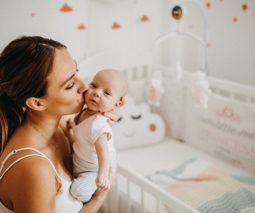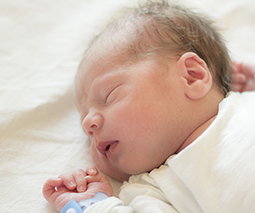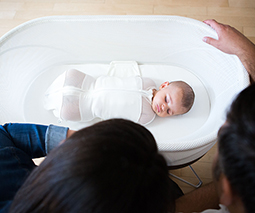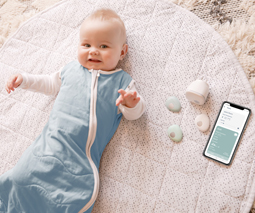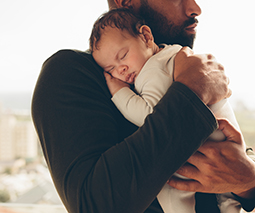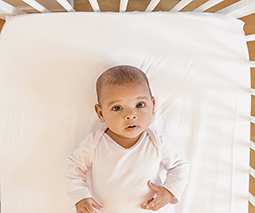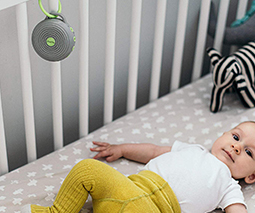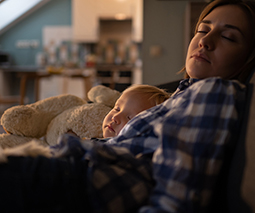Rest assured: How to organise your baby’s room for the best sleep

When it comes to your baby, how they sleep will largely be up to your little one and you (no pressure!). However, organising their nursery the right way can give you a great headstart, says baby expert Chris Minogue.
She’s a Mothercraft nurse, resident expert on Kinderling Helpline and the author of Bringing Baby Home. With over 30 years’ experience in the baby business, she specialises in helping parents get their bub to sleep so she knows a thing or 20.
It’s worth noting SIDS safety guidelines recommend babies sleep in your room for the first 6-12 months in a cot or bassinet. Once they’re ready to move to their own room, Chris suggests these tried-and-tested tips to give them the best shot at sleep:
1. Ensure baby’s bedding is safe
The most important point. In addition to being comfortable, you want to make sure your bundle of joy is safe and sound while they sleep. Use a cot made to Australian safety standards and be wary of gaps they can get caught in or sides that are too low and can be climbed.
Chris also urges parents to follow SIDS guidelines when it comes to bedding and other cot accessories.
“From zero to 12 months of age, nothing should be in the cot – no bumpers, no toys, no pillows,” she advises. “You can have a sheet or a blanket securely tucked into the bottom of the bed, but the sheet should only come up to the baby’s stomach.”
Set up your nursery so they'll sleep like a baby 😴
Want the best chance of getting your bub to sleep? Start with their room.Sound / captions on 🔊😀
Posted by Babyology on Wednesday, October 17, 2018
2. Keep their change table close
This will depend on the size and lay-out of the room, but ideally you want your change table stationed as close to their cot as possible. This will shorten the time it takes to transfer them back and forth and lessen the chance of them waking fully during those tense nocturnal nappy changes.
Chris also suggests keeping your table supplies well-stocked and easily accessible. “You want to have your wipes, nappies, extra clothes and nappy bin close-by so it’s quick and so you’re not stepping away from that area, which can be dangerous,” she says.
Find a comfortable and absorbent nappy you can trust overnight and take them out of the packet in advance, so you’re not ripping and rustling in the middle of the night.
3. Get the lighting right
Chris says what’s right depends on the time of day.
“For day sleeps, dim the room to a dull grey light – you don’t want it pitch black, like a Batcave,” she advises. “At night, you’ll want it darker so your baby knows they’re in for a longer, deeper sleep. As they get older, you want to teach them to differentiate the difference between day sleeps, which are shorter, and night ones.”
4. Have a feeding chair nearby
Late-night feeds can be frequent and difficult, so you might as well be comfortable when you do it. If space permits, Chris recommends keeping a comfy chair close to the cot so you’re not breaking your back or needing to change rooms when bub is hungry.

5. Have a soft lamp at hand
A gentle light is great for those night nappy changes and saves you switching on the main lights if you’re trying to find more wipes or you drop baby’s dummy under the cot.
6. Use a speaker to play white noise
If they’re having troubles snoozing, you can experiment with playing white noise to soothe them to sleep. It’s not every baby’s jam of course, but it’s worth a try!
 Need some more baby sleep advice? Our Parent School sleep experts can help. Click to find out more or book a one-on-one session.
Need some more baby sleep advice? Our Parent School sleep experts can help. Click to find out more or book a one-on-one session.
